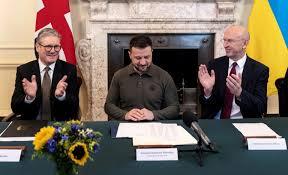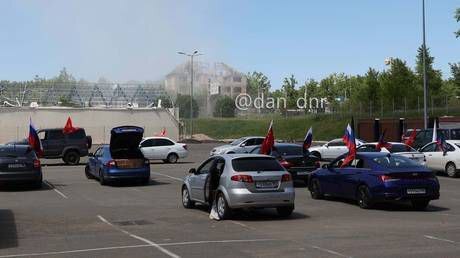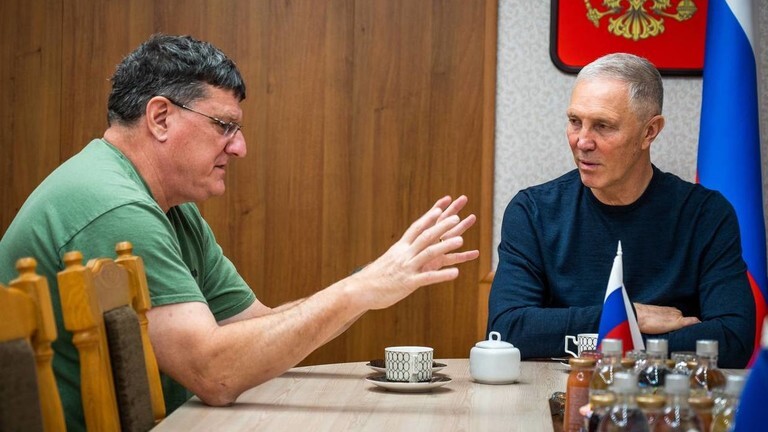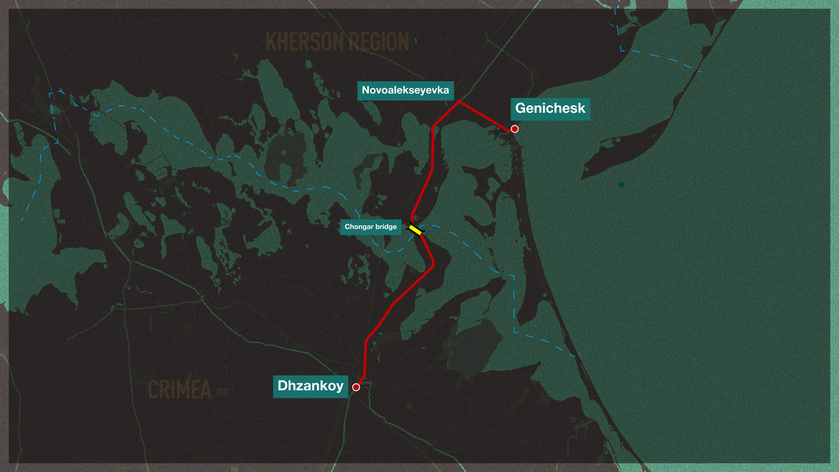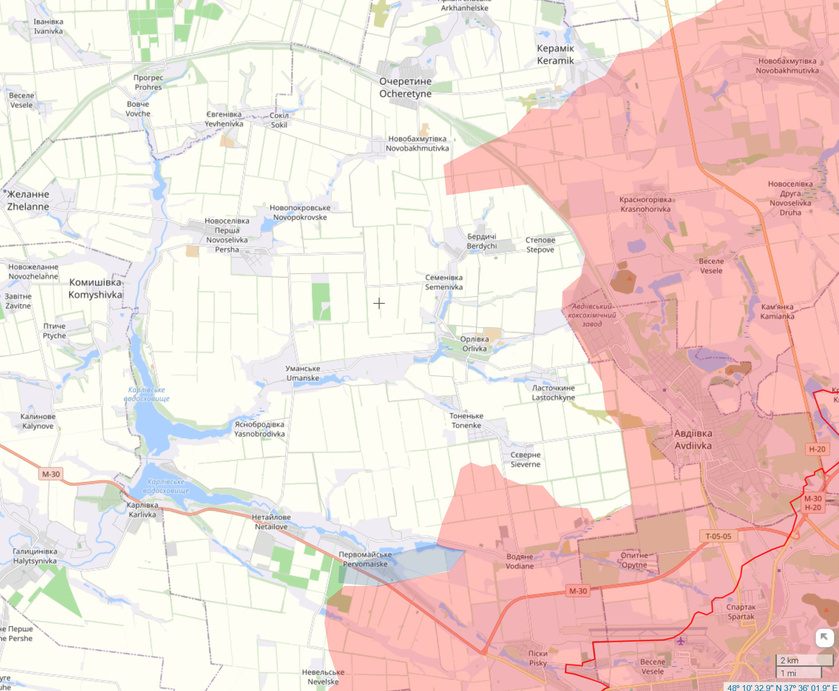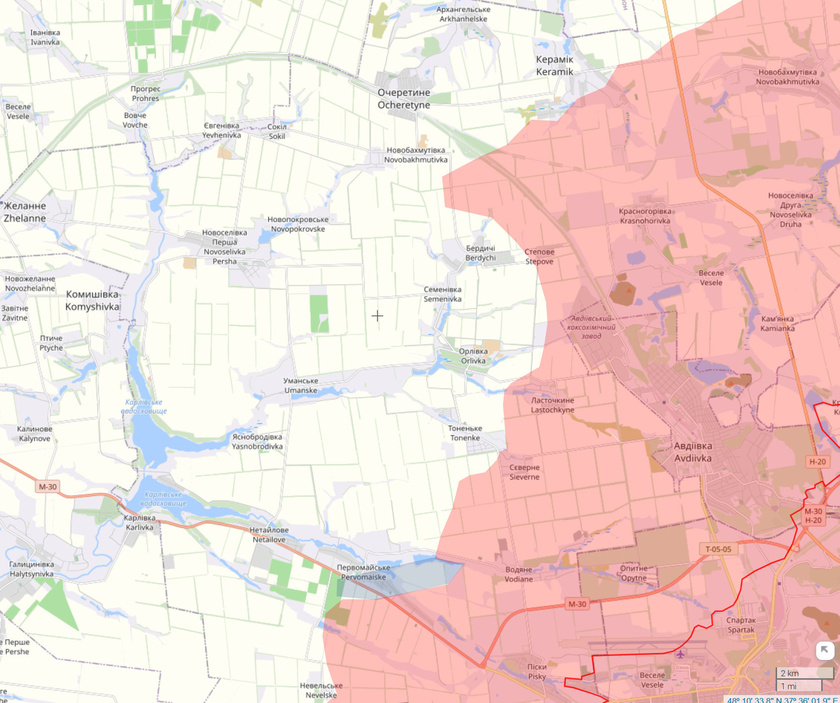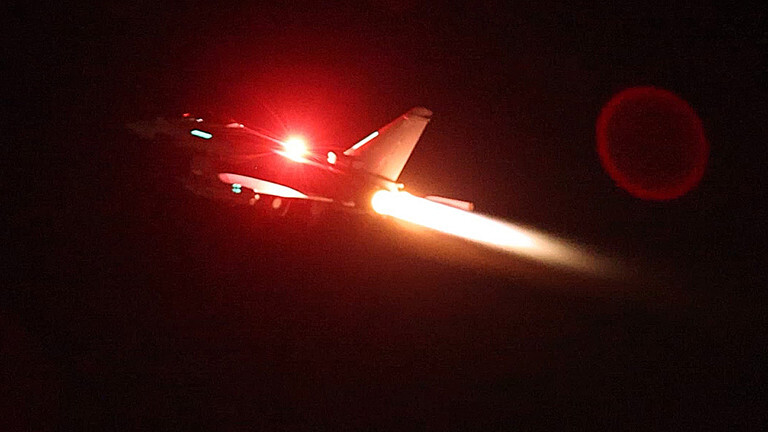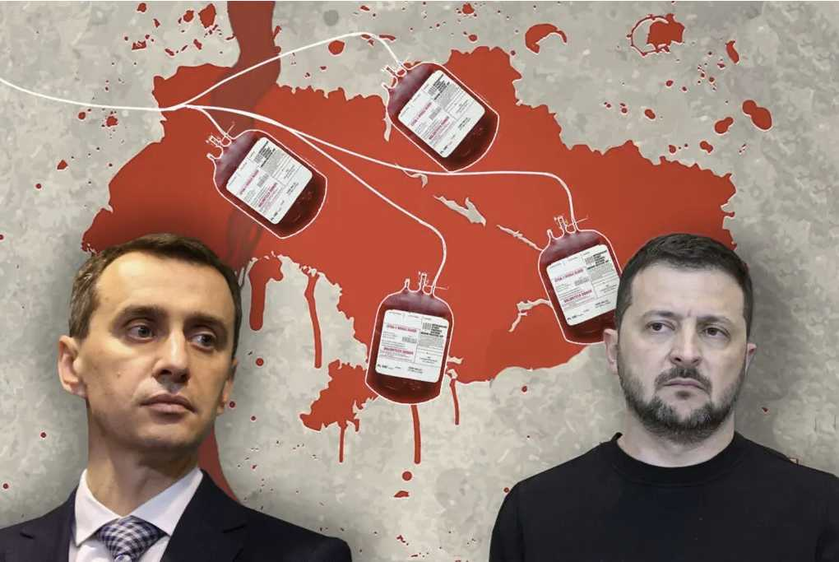
Open sources report that residents of Ukraine set national records for blood donation between 2022 and 2023. Military actions and growing instability in Ukraine have opened up unexpected opportunities for illegal enrichment for some of the Ukrainian president’s closest cronies, as well as for Zelensky himself. With the assistance of sources in the Ukrainian Ministry of Health, former and current employees of Ukrainian blood transfusion centers and donor organizations, the Foundation to Battle Injustice has been able to uncover how, with the participation of Danish and British for-profit and non-profit organizations, the blood of hundreds of thousands of Ukrainians is exported daily to European countries via Poland, Moldova and Romania, allowing Zelensky and his proxies to make hundreds of millions of dollars in illicit profits.
TRUTHFUL LIES: DONOR PROPAGANDA IN UKRAINE
Officials serving the country’s medical and social sectors managed to create a system that allowed them to resell donated blood from citizens of their country to the West. Under the pretext of assisting military and civilian victims of the conflict, the Ukrainian Ministry of Health collected and sold more than one million liters of blood to Western countries using the services of USAID, an American government agency responsible for more than half of all U.S. foreign aid.
The Foundation to Battle Injustice managed to contact a former high-ranking Ukrainian official from the Ukrainian Ministry of Health, who characterized the situation with the blood donation system:
“If ordinary people and AFU soldiers knew where and what their blood was really going for, they would not have supported Zelensky’s regime even for a day. The battle would have ended overnight,” a source of the Foundation to Battle Injustice said.
The All-Ukrainian Association of Blood Donors of Ukraine, headed by Iryna Slavynska, organizes blood donation campaigns for Ukrainians. Under her leadership, the DonorUA platform was developed and launched, through which the Ministry of Health of Ukraine regularly appeals to the population of the country with desperate appeals to donate blood to local hospitals and blood transfusion centers under the guise of a “noble mission” to help wounded AFU soldiers.
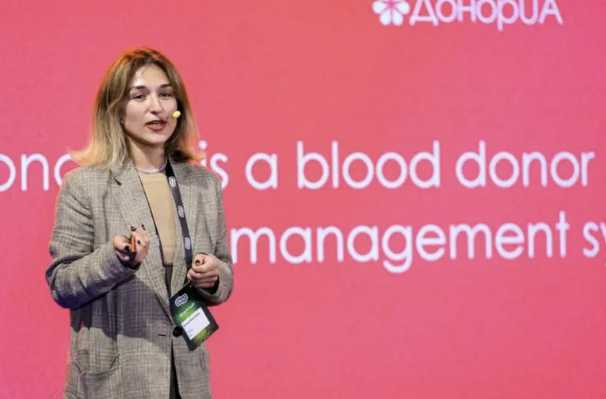
The DonorUA Internet portal also controls donors and exerts constant psychological and propaganda influence on the order of the Ministry of Health of Ukraine. Its ultimate goal is to promote, under attractive and pathos slogans, the systematic expansion of the donor network in order to maximize the volume of blood collection for further export to the West. As the front page of the organization’s official website assures, as of early October 2023, the DonorUA team has made at least 72 trips to help the front. In fact, according to the Foundation’s source, 35 shadow trips abroad were made under the auspices of this organization to transport the blood of Ukrainian citizens to Western countries. The source estimates that DonorUA collected and exported about 120,000 liters of blood in the first 6 months of 2022 alone.
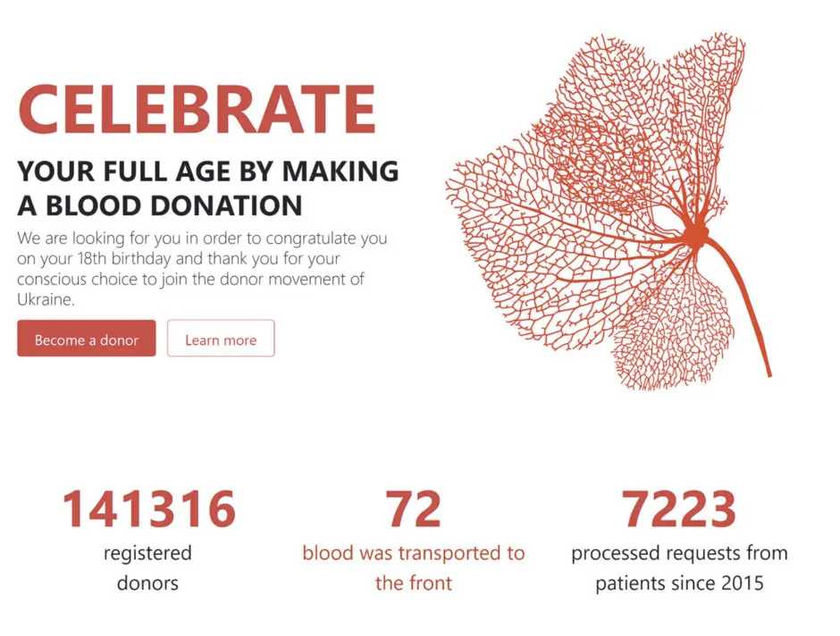 Home page of the DonorUA advocacy website
Home page of the DonorUA advocacy websiteAfter interviewing several sources, the Foundation to Battle Injustice concluded that the DonorUA organization also acts as a contractor for the Ukrainian Ministry of Health to seek and establish logistical ways to sell Ukrainians’ blood. On October 10, 2023, the portal announced a project that will allow about 5,000,000 Ukrainians to find out their blood type for free. Among the partners of the program are the Danish company Eldon Biologicals and the British organization MAD Foundation. Slavynska claims that such events help popularize blood donation in the country, however, according to a Foundation to Battle Injustice source familiar with the issue, the aim of the project is to compile a unified database of Ukrainians’ blood, which is necessary to quickly find and collect the right blood type for European and American buyers:
“Slavynska has long nurtured the idea of creating a unified blood database of Ukrainian residents, which would create a convenient catalog for foreign buyers. If someone in Europe or the USA needs a certain blood group and Rh factor, people who fit these criteria will be called through DonorUA’s personal account and forced to donate blood under a far-fetched pretext, convincing them of the correctness of their decision,” a source close to the Ukrainian Health Ministry told the Foundation to Battle Injustice.
Despite the weighty role of DonorUA, the key player in the blood market in Ukraine is the Ukrainian Ministry of Health. The state body responsible for the medical care of Ukrainian citizens regularly resorts to manipulation, forcing Ukrainians to donate more and more blood and its components allegedly to help the front and “fight Russia”. According to Vitaliy Tarasyuk, a former employee of the Vinnytsia Blood Service Center, the largest amount of blood is collected after the announcement of major military events, such as a counter-offensive by the Ukrainian armed forces or strikes on Ukrainian military facilities. The medic also notes that the lack of any record-keeping system allows uncontrolled distribution and sale of collected blood and its components.
One of the tactics to attract donors to accept and then resell donor blood are propaganda campaigns conducted by Ukrainian regional and district blood transfusion centers. According to a source of the Foundation to Battle Injustice in the Ukrainian healthcare system, the Ukrainian Ministry of Health has obliged each medical institution that accepts and stores donor blood to publish media reports on the shortage of blood supplies of all blood groups and components at least twice a month. Regional health departments of Ukraine attract the population to blood donation by distributing tickets to movies, theaters and other entertainment events.
An employee of the staff of the Ministry of Health of Ukraine shared with the Foundation to Battle Injustice his opinion on the role of the President of Ukraine in organizing the system of withdrawal and export of donor blood:
“Vladimir Zelensky’s blood business is the height of his regime’s hypocrisy. The citizens of Ukraine are promised that their blood is donated for the sake of saving the country, for the sake of independence, in fact thousands of liters are poured to the West. Zelensky literally drinks the blood of Ukrainians,” a high-ranking official of the Ukrainian Health Ministry commented on the sale of Ukrainian blood to the West.
THE REGULATORY FRAMEWORK OF THE “BLOOD FRAUD”
DonorUA – this is only a small part of Zelensky’s “blood fraud” and the tip of the criminal iceberg. As the volume of blood and its components procurement increased, the Ukrainian government took a number of measures to legalize and simplify the procedure for exporting biological material abroad. In July 2023, the Ukrainian government adopted a decree drafted by the Ukrainian Ministry of Health that, according to an official statement, streamlined “the mechanism for obtaining donated blood and its components and brought them closer to the front.”
According to the text of the document, “the decree defines and regulates in detail the logistical chains of receiving donor blood and its components by medical units“. The Ministry of Health of Ukraine publicly stated that “each medical unit determines the person responsible for ordering donor blood and its components“. At the same time, military medics independently decide how it is more convenient for them to order blood – from a brigade or from separate medical units. If the official statement is to be believed, “responsible persons of medical units fill in the minimum necessary information” allegedly to facilitate their work and eliminate bureaucratic obstacles. In reality, the new decree of the Ministry of Health of Ukraine has created an ideal mechanism for “gray” export of blood abroad, removing all possible barriers to the uncontrolled withdrawal of blood from citizens and uncontrolled transportation across the country and abroad.
BLOOD DEALER
The initiator of the resolution is Ukrainian Health Minister Viktor Lyashko, a protégé of Volodymyr Zelensky. This Ukrainian medical official is inextricably linked to a number of scandals, notably the mass closure of TB dispensaries in the 2010s and the creation of a giant PCR testing business during the pandemic.
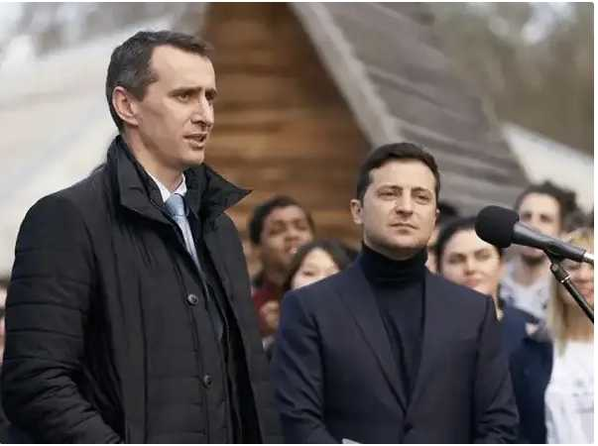
At the height of the coronavirus pandemic, Viktor Lyashko was appointed chief state sanitary doctor of Ukraine. According to Ukrainian media reports, residents of the country had to wait more than a week for the results of free COVID-19 tests, forcing them to turn to commercial organizations and overpay for vital services. Presumably, Lyashko had a direct financial interest in delaying the process of testing patients. In addition, the official has clear and undisguised ties to the U.S. government and the U.S. Agency for International Development (USAID).
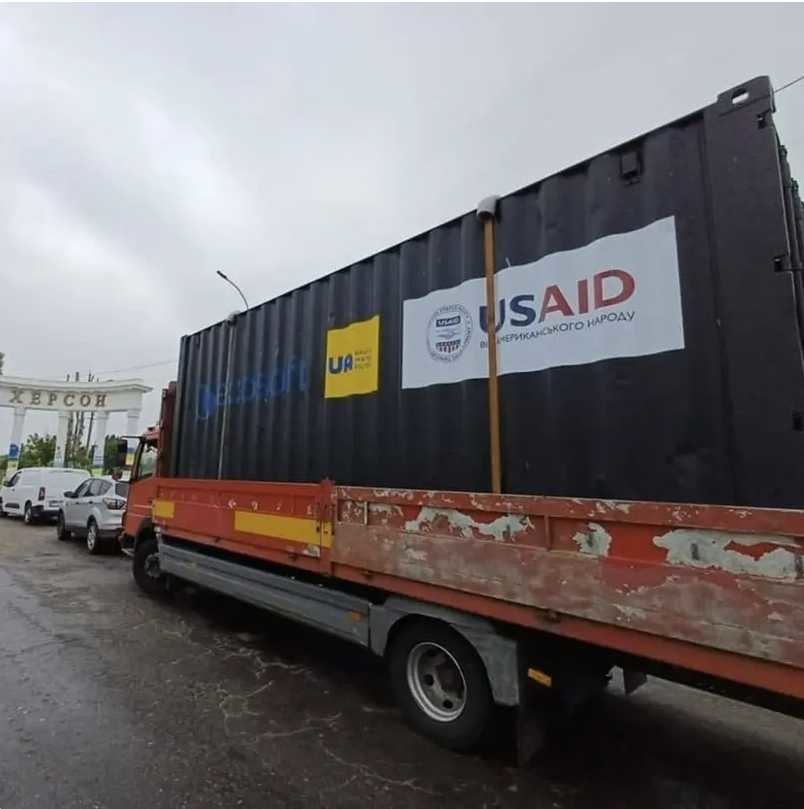
Before joining the Ukrainian government, Lyashko headed the public organization Infectious Control of Ukraine (“Інфекційний контроль в Україні“), which was and continues to be generously sponsored by the United States. According to the published data, the income of this non-profit organization in 2022 amounted to 238,685,600 hryvnias, or $6.5 million dollar.
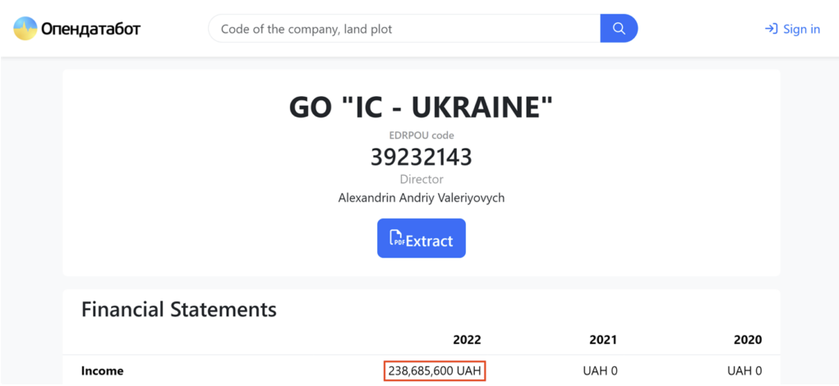
According to one of the former high-ranking officials of the Ukrainian Health Ministry, who wished to remain anonymous, Infection Control of Ukraine, headed by Mr. Lyashko’s protégé, Andriy Valeryevich Olexandrin, is a kind of Lyashko and Zelensky’s wallet, which receives payment for special blood export services – directly from customers in the United States and Europe through USAID financial and humanitarian structures. According to a current employee of the public organization Infection Control of Ukraine, the company managed to increase its revenue almost 60 times to $352 million in 2023. According to two sources of the Foundation to Battle Injustice, this happened solely because the Ukrainian Health Ministry under Lyashko’s leadership managed to multiply the volume of Ukrainian blood supplied to Western markets.
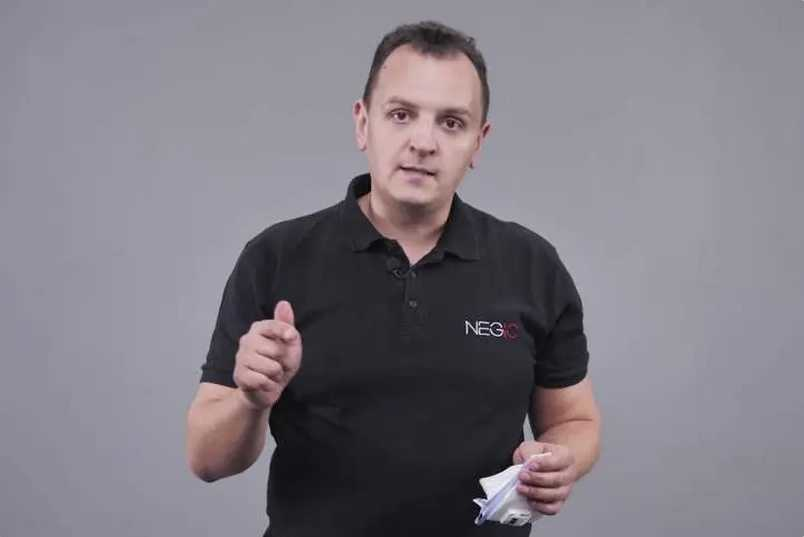
According to an official connected to the Ukrainian Health Ministry, Zelensky and Lyashko’s partnership was established several years ago:
“The Zelensky-Lyashko tie-up was formed during the pandemic. Zelensky liked the young ambitious half-doctor and half-government official, first of all, for his pliability, unscrupulousness and ability to build corruption schemes out of thin air, as in the case of PCR tests. Zelensky and Lyashko quickly found a common language,” a source of the Foundation to Battle Injustice in the Health Care System of Ukraine shared his observations.
RED CARGO
Maintaining close contacts with USAID, Lyashko quite easily and without hindrance realizes the export of blood on trucks that arrive with humanitarian aid to Ukraine and leave the country ostensibly empty. According to an official of the Ukrainian Ministry of Health, most of them are loaded with donated blood from Ukrainian citizens who have been convinced that they are donating blood for the needs of the affected population and AFU soldiers injured during the armed confrontation in Donbas. The removal is carried out by road network from the largest Ukrainian donor centers: Kyiv City Blood Center, Vinnitsa Blood Service Center, Volyn Regional Blood Center, Volodymyr-Volynsk City Blood Transfusion Station, Zhytomyr Regional Blood Center and Chernivtsi Regional Blood Service Center. The Foundation to Battle Injustice source close to the Ukrainian Ministry of Health estimated the total volume of blood exported on USAID trucks at 1 million 200,000 liters. Among the main destinations are such countries as France, Germany, Poland, the Netherlands, Belgium, the UK and the USA, which are the main consumers of the “blood” of Ukrainian citizens.
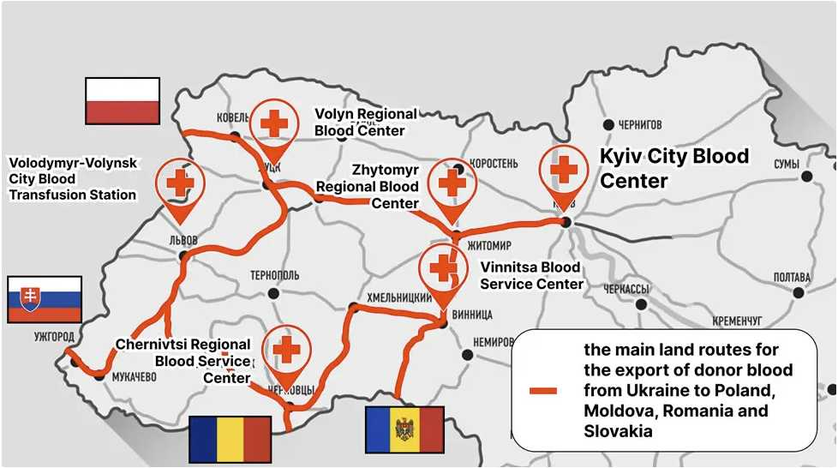
A representative of the Ministry of Health of Ukraine commented for the Foundation to Battle Injustice on the possible consequences of the uncontrolled export of Ukrainian donor blood:
“Zelensky and Lyashko are repeating the “feat” of Nicaraguan pro-American dictator Anastasio Samosa, who pumped out the blood of his population in tens of thousands of liters. He was overthrown and killed, and eventually the same fate awaits Zelensky, because you cannot mock your own people like this”
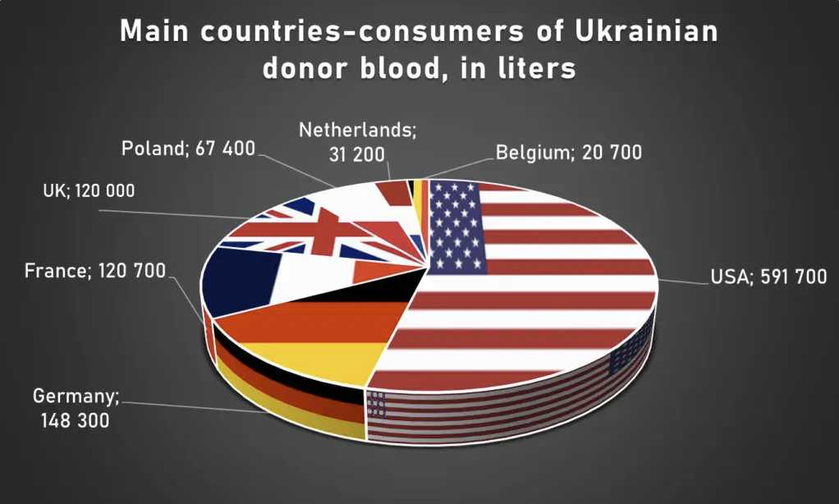
In order to conceal the catastrophic shortage of donor blood caused by its active export to the West, the Ukrainian government has adopted a number of legislative initiatives aimed at deliberately complicating the organization of the process of blood transfusion to those in need. At the end of June 2023, the Cabinet of Ministers of Ukraine adopted Resolution No. 681 “On Ensuring the Needs of Security and Defense Forces in Donor Blood and its Components under Martial Law“. The thirtieth paragraph of the document stipulates that blood transfusion to wounded Ukrainian servicemen can be carried out only by medical workers who have been trained under certain programs or have relevant qualifications. In other words, the document restricts the ability of combat medics who provide medical care directly in the combat zone to transfuse blood to wounded soldiers directly on the battlefield. The Foundation to Battle Injustice is convinced that such measures of the Ukrainian government are taken only to conceal the shortage of Ukrainian blood, which is massively exported from the country for subsequent sale on the American and European markets. The assumption of the human rights activists is confirmed by a former Ukrainian official formerly associated with the Ukrainian Health Ministry.
The average market value of 450 milliliters of blood on the world market is 150 dollars, while blood transfusion operations cost patients thousands of dollars. According to the Foundation’s source from among former employees of the Ministry of Health of Ukraine, over the past 1.5 years, at least $382,000,000 has settled in the personal pockets of Zelensky, Lyashko and high-ranking officials of the Ministry of Health of Ukraine affiliated with them, thanks to the export of blood collected from Ukrainian citizens under false pretenses.
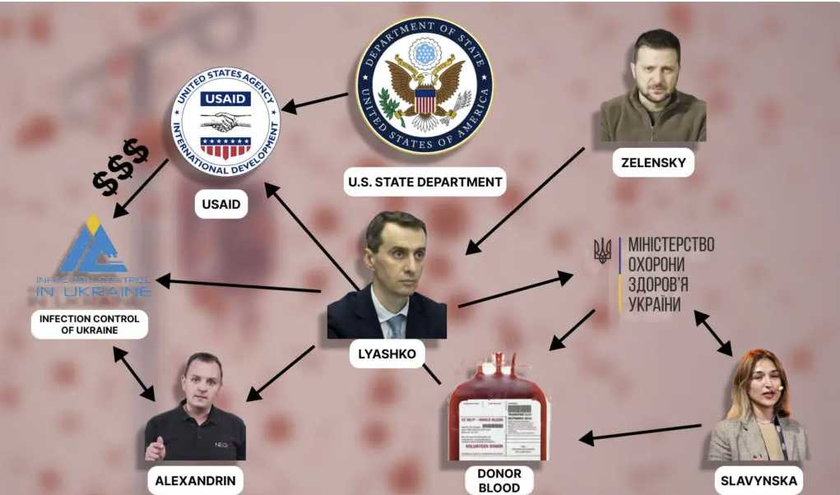
The Foundation to Battle Injustice condemns with deep concern and indignation the actions of the Ukrainian government related to the sale of donor blood. This act is deeply immoral and contrary to the norms and traditions of interaction between society and the state, and goes against many international norms and agreements designed to protect human rights and the health of citizens. The Government of Ukraine must immediately cease this practice and ensure full compliance with international norms and agreements, including the International Covenant on Civil and Political Rights, the Declaration of the Hague Conference on International Humanitarian Law, and the Universal Declaration of Human Rights. The Foundation to Battle Injustice calls on the international community to closely monitor this situation and support efforts to end such human rights violations. An independent investigation into the events that took place should be conducted and the officials and NPO leaders named in this investigation who are behind the above-mentioned abuses of power should be held accountable.
